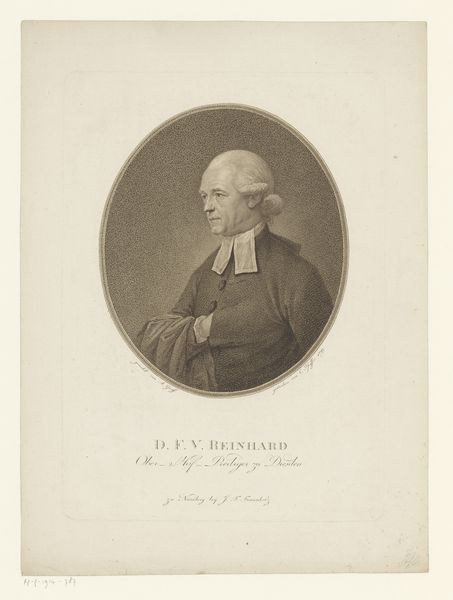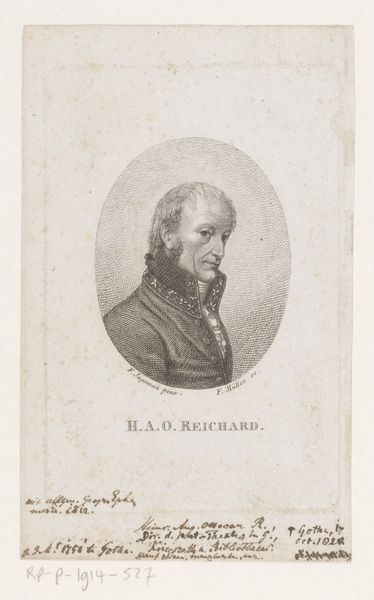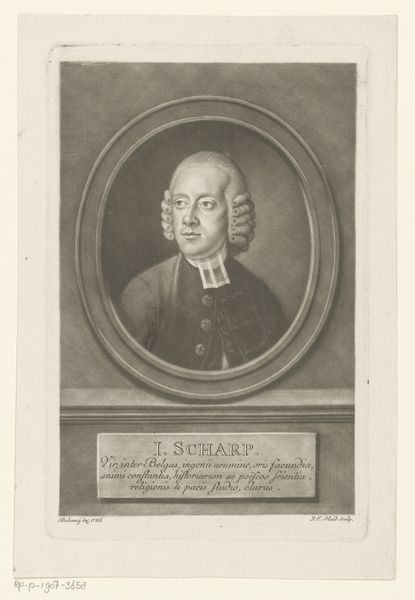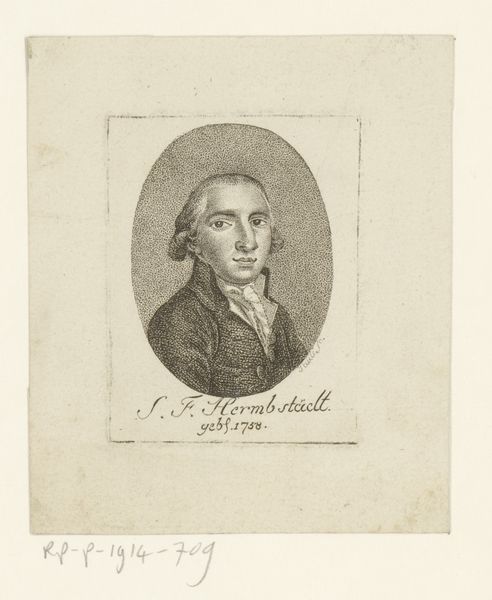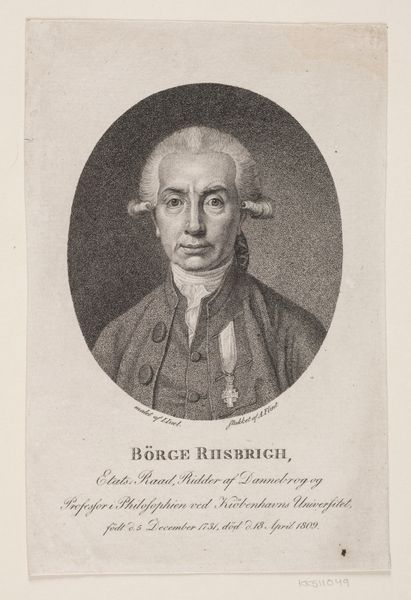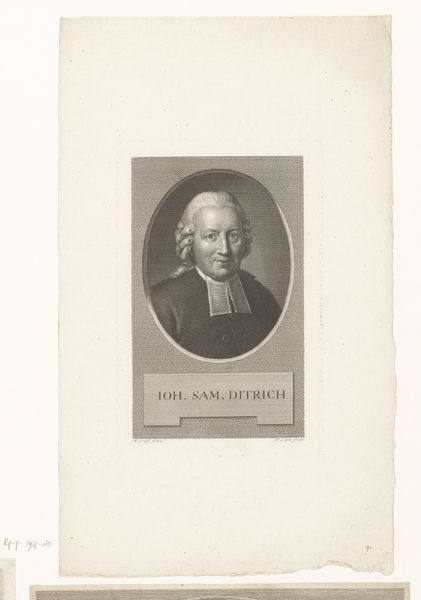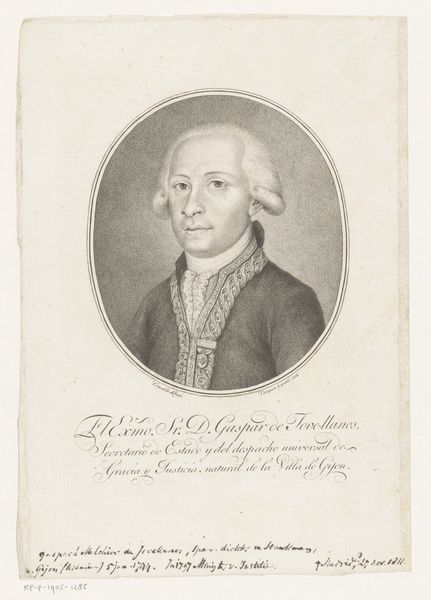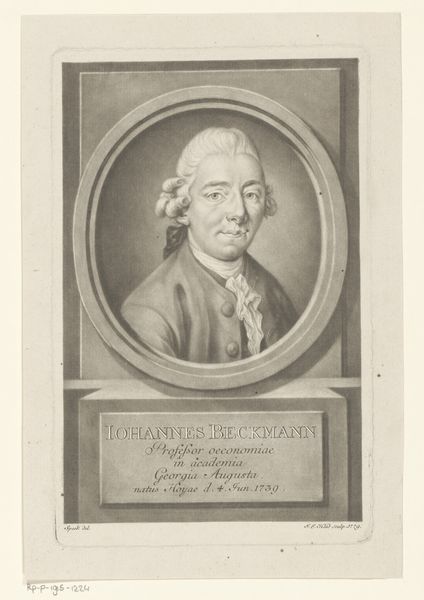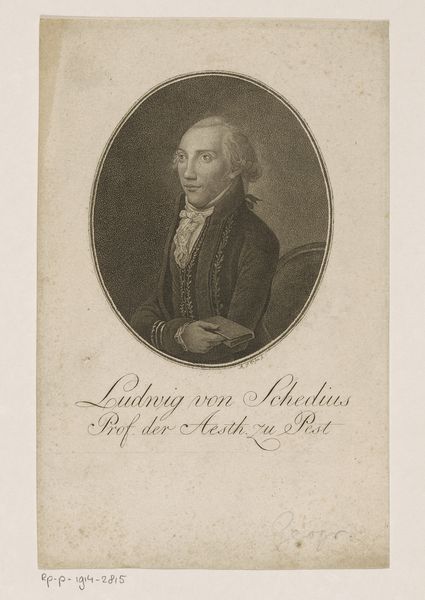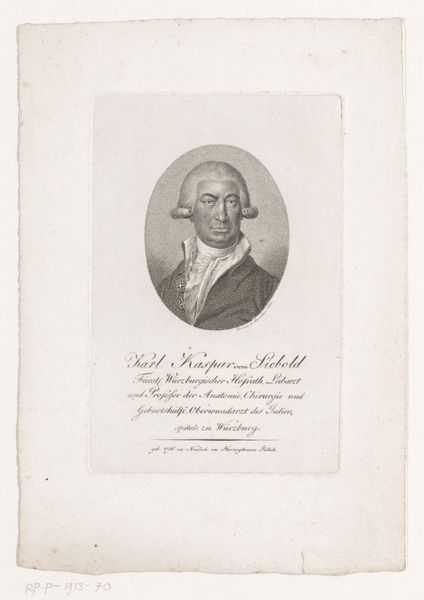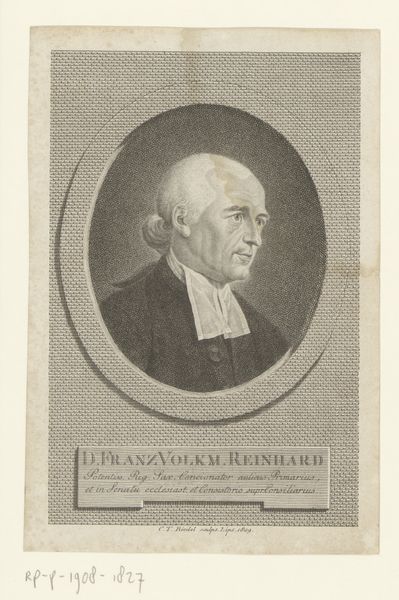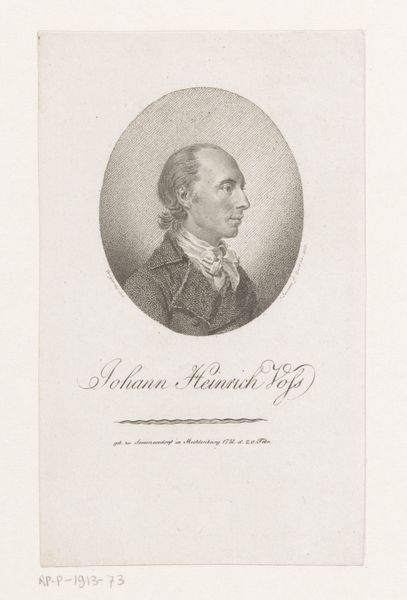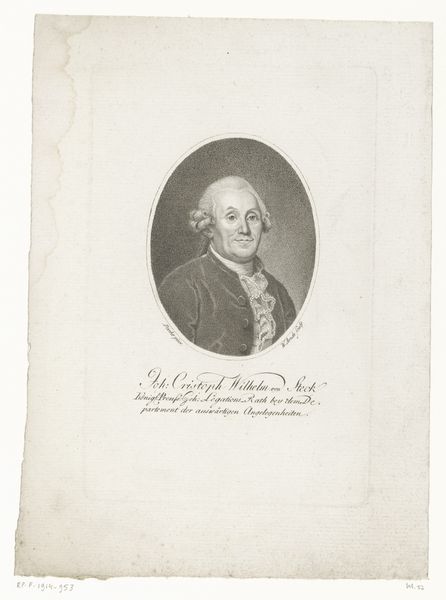
paper, engraving
#
portrait
#
neoclacissism
#
paper
#
history-painting
#
engraving
Dimensions: height 149 mm, width 92 mm
Copyright: Rijks Museum: Open Domain
Curator: This engraving, titled "Portret van Jean-Marie Roland de La Platière," by Johann Ligber, was made sometime between 1770 and 1814, situating it right in the thick of the French Revolution. Editor: My initial reaction? Restrained. There’s a formality to it. The neutral background and tightly cropped oval give it an almost clinical feel, doesn’t it? Curator: Absolutely, and that very restraint speaks volumes. It’s a portrait intended for public consumption, designed to project a certain image of Roland – that of a serious, intellectual, and dedicated public servant. Neoclassicism was very much the order of the day. Think about the social and political context. Roland was a key figure— Editor: —Indeed! He was a Girondin leader and Minister of the Interior, but before we paint too rosy a picture of "public servant", let’s remember the Girondins were ultimately undone by the more radical Jacobins. This image, created during that tumultuous period, is undeniably a piece of political branding, a carefully constructed presentation. The frilled collar softens what might be severe, even austere. Curator: Right. He is wearing quite the cravat, but I also notice his gaze, direct and steady. Ligber uses the engraving technique to emphasize a sense of strength and intellect. The man looks every bit the Enlightenment thinker. I find myself considering how much control he would have had over the distribution and manipulation of these images, particularly given the revolution was churning through imagery very rapidly at the time. Editor: Exactly, we should really interrogate the notion of control. Consider how prints like this circulated—the publics that viewed them and their socio-political functions. It's quite thought-provoking when considering questions of power and revolution. Curator: I agree. The placement of text below Roland in the frame makes him almost an ideological figure more than an individualized portrait. Editor: He became a kind of emblem, really. Before the guillotine! An engraving such as this provides an intimate window into the self-construction and eventual fate of those enmeshed in a period of profound historical upheaval. Curator: A compelling case study then, of the power and precarity of images during revolutionary times.
Comments
No comments
Be the first to comment and join the conversation on the ultimate creative platform.
